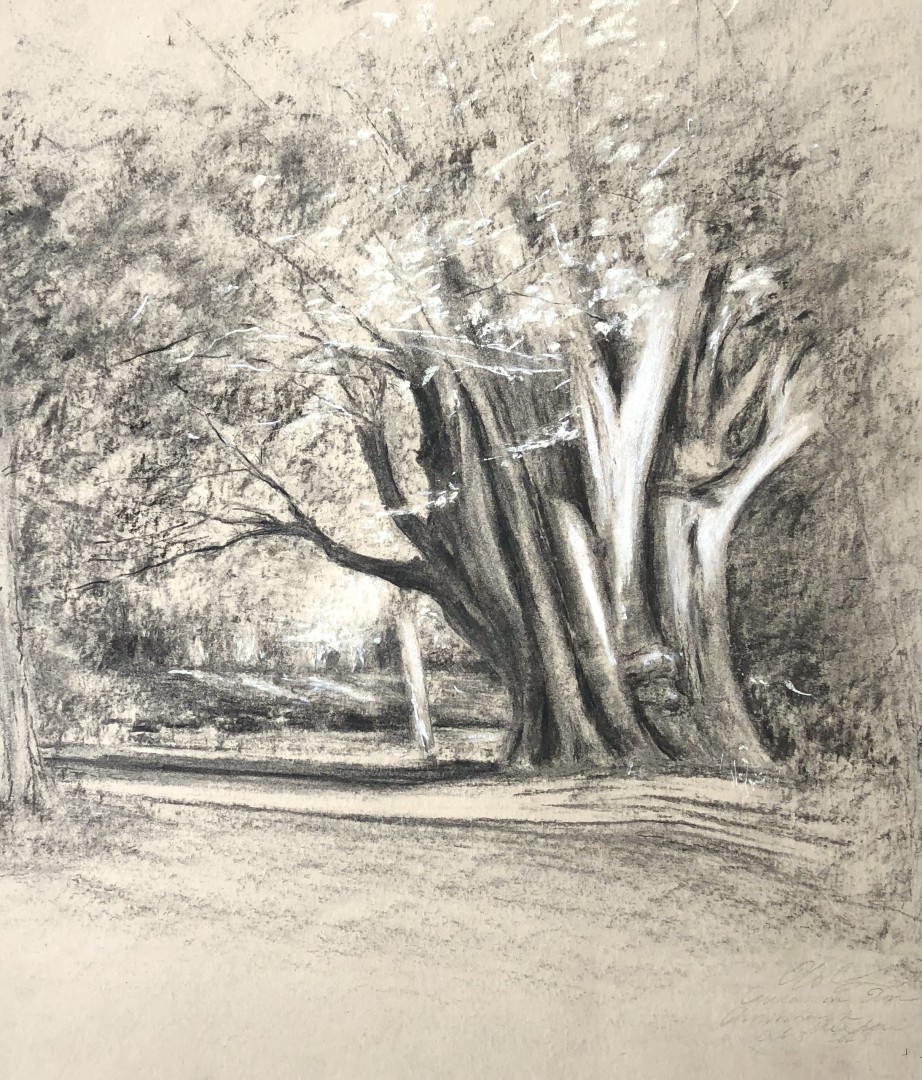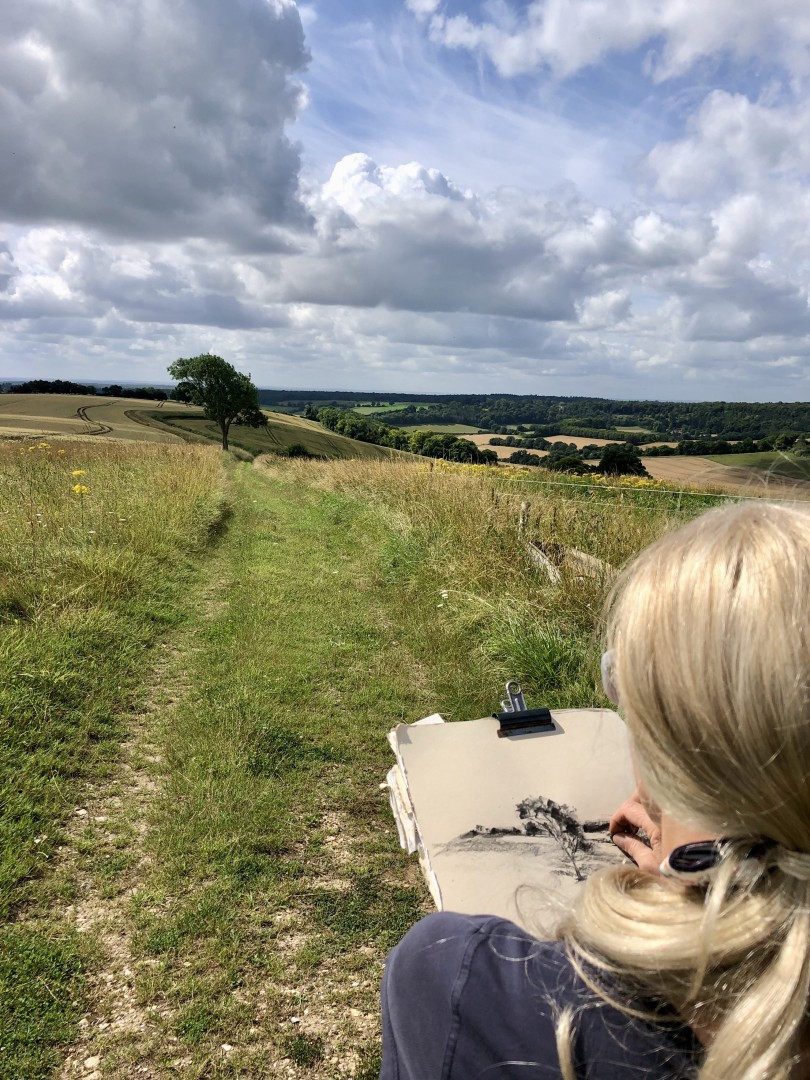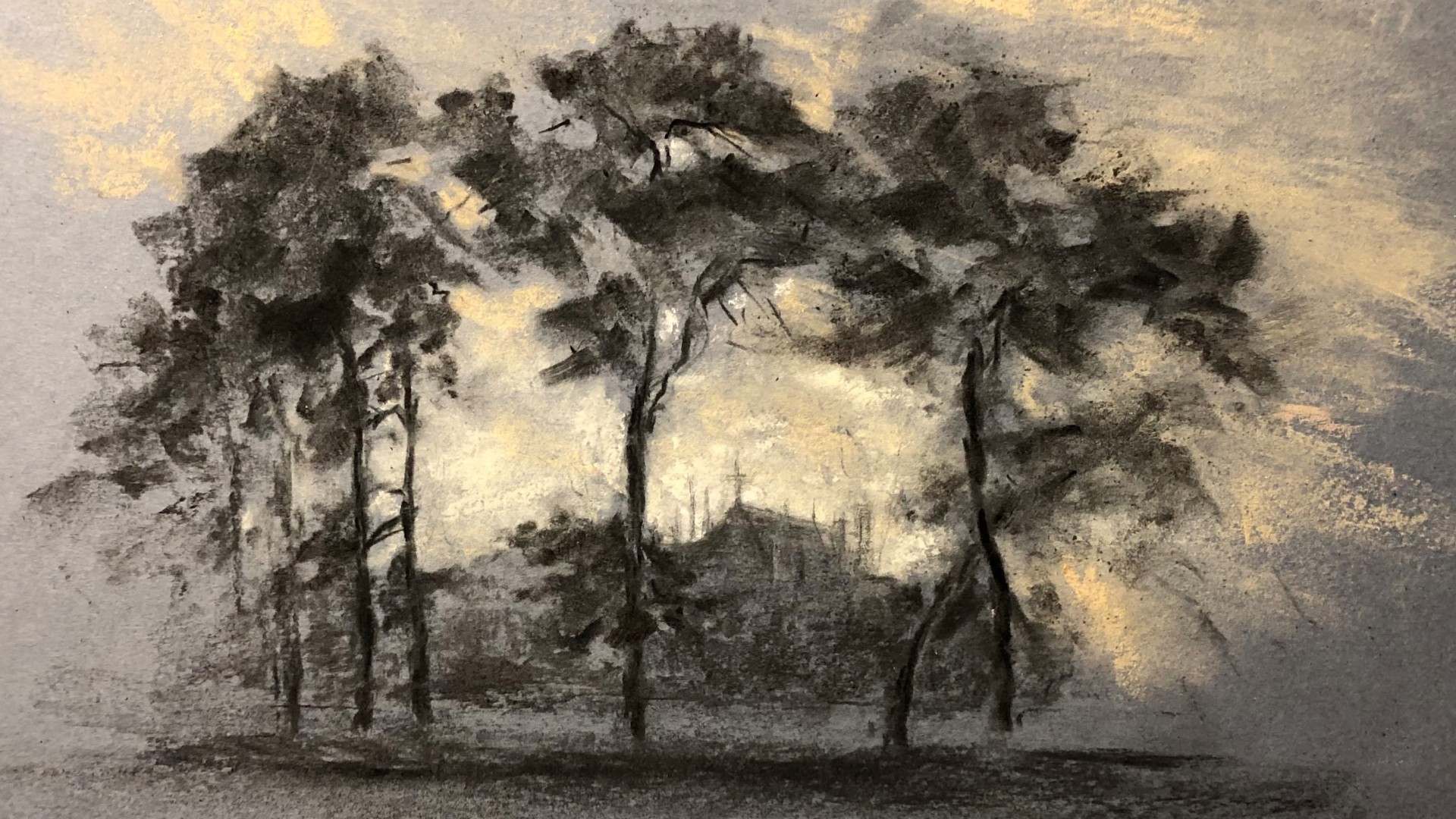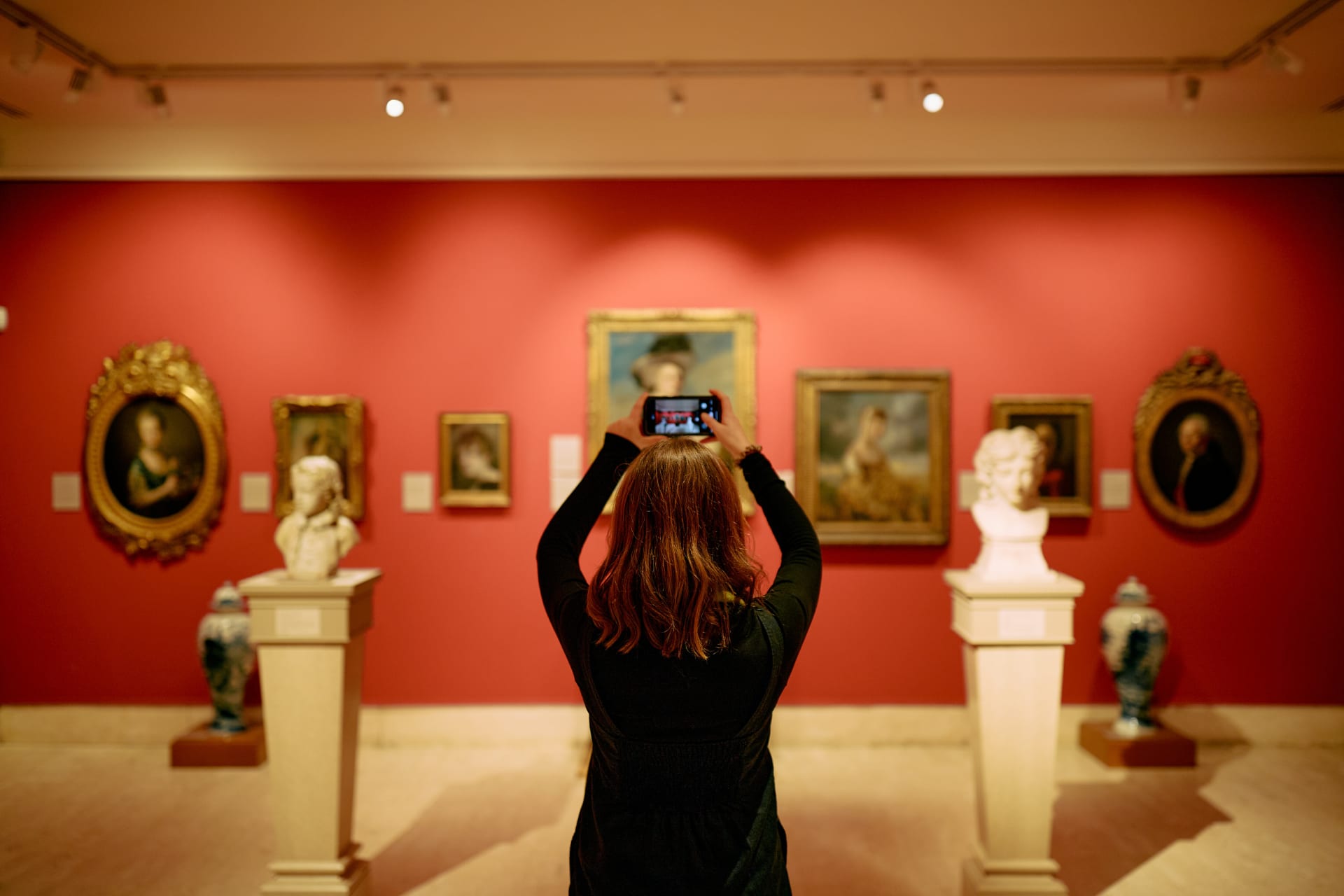If you’re a regular walker along the paths and in the parks of Oxford, it’s likely you’ll have come across Emma Coleman-Jones, wrapped up against the weather all year round as she sketches the city’s trees. Emma is the latest winner of the Oxfordshire Artweeks Mary Moser Award, an annual award intended to help develop the career of a professional artist who has taken up art as a second career later in life. Esther Lafferty, Festival Director of the Artweeks Festival – which takes place across Oxfordshire next month (3-26 May) – chats to Emma to find out more about her artistic practice and the art she’ll have on show at her Artweeks exhibition (venue 74).
In displaying her drawings in the iconic Victorian cricket pavilion at the heart of the University Parks, Emma is able to point out many of the trees featured in her work from the door of the venue. “Originally,” says Emma, “I was in academia, in the field of evolutionary biology, before becoming a school teacher. For over 25 years I have enjoyed teaching biology and environmental studies to sixth-form students. Alongside this I have had roles in the University and at several of the Museums, as well as running nature-art projects in school and community settings. Although I had always been involved in arts and crafts, it wasn’t until my youngest son went to school that I found time to really focus on improving my drawing skills. I'd always wanted to be that person who could kind of go out with a sketchbook and quickly capture what they saw”.
Over the following years, Emma joined a number of art courses, including several with tutor Jill Colchester, another Artweeks artist best known for her dynamic mark-marking and rapid portraiture. From the word go she made it her mission to draw something every day, an aspect of her practice which remains essential to her current work. In 2019 she took a diploma in art and design at Oxford City College and since then has gradually devoted more and more of her time to art, choosing local trees as her main muse.

“Having been an outdoor kind of person my whole life – walking, horse riding, biking, cross country running – I’ve always been interested in natural history,” she explains. “Then, when my children were small, their slow pace and inquisitive nature gave me a fresh opportunity to observe the finer details of lichens, fungi, feathers and insects that might have remained unnoticed on a faster walk.” She considers this idea of taking note, observing things first hand and appreciating serendipitous moments or chance finds as central to her work. In this she also takes particular inspiration from the work of John Ruskin and the tradition of the Victorian naturalists.
‘I am primarily drawn to trees, not only their stately beauty, but because of the way they define where you are and mark out the changing seasons. Large or unusual trees are always striking features in a park or a wood, yet even within the city of Oxford, where the buildings grab our attention, they still stand out as markers of place and time. People are often emotionally attached to specific trees which signify something special to them, and wherever I sketch, people strike up a conversation and I get to hear their stories.”
She continues: “One tree I enjoyed drawing many times – and I am so glad that I did - was an old Caucasian Elm by the riverbank in Christchurch Meadow. It is thought to have been planted in the late 18th century but sadly blew down in a storm in December 2024. With its enormous multi-stemmed trunk and propped branch, this tree was a favourite of many local people, and I had many conversations about it over the years. The accepted story, verified by the Head Gardener at Christchurch, is that the tree had been gifted to the Oxford Botanic Garden but, lacking space, they passed it on to Christchurch Meadow. It is fortunate indeed that saplings had already been propagated from the tree and are planted nearby, so, in a sense, it will continue to live on in the meadow.”
Another favourite is the stunning horse chestnut tree in The Lamb and Flag passage off St Giles which she’s drawn in all sorts of different weathers, including in the snow and the moonlight. “Although everyone recognises it, it has been very hard to discover its history,” she remarks. “Surely no one would have planted it in that spot, so I imagine it was just a conker that a squirrel dropped. If anyone knows more I would really love to hear”.
Emma has also drawn the Jaberwocky Tree’or Pococke Plane, a 400-year-old specimen with an extremely unusual shape which apparently inspired the creature in Lewis Carroll’s Alice in Wonderland. It is in a private garden at Christchurch so she had to have special permission:
“It's absolutely sensational, set on its own in the beautiful hidden garden. IIt's quite a challenge to draw however because the leaves come so close to the ground: you can only see the wonderfully twisty structure of its branches in the depths of winter as Plane trees keep their leaves for a long time through the autumn.
I love the resilience of trees that grow in difficult circumstances: out of the top of a wall, for example, or half submerged in floods, like the Crack Willows that line our river banks. Whilst walking by the Thames at Godstow Nunnery, I often stop to look at a fallen Silver Poplar with its shimmering leaves. It must have toppled over many years ago but it seems to be making the best of the situation and growing horizontally!’
Initially Emma focused purely on the structure and form of the trees themselves, but increasingly, although trees remain at the heart of her work, she’s including more of the background, to set these in context. In her Artweeks show, you’ll sometimes see the sky, maybe a reflection and occasionally the buildings alongside which her trees stand. She will also be sharing her sketchbooks, packed with the drawings which she makes every day somewhere in Oxford’s parks, meadows, woods or streets. “These often form a starting point for conversations about local trees and I am always keen to hear from people about significant and historic trees, and those with important personal connections.”

For more information on Oxfordshire Artweeks and the hundreds of venues that will welcome you in, for free, visit artweeks.org









